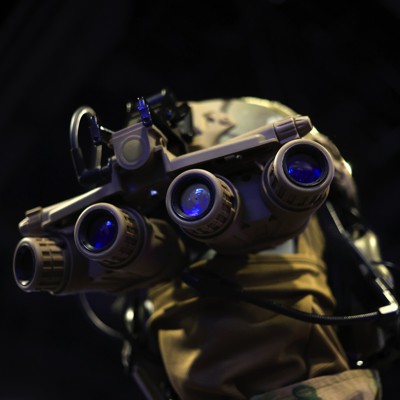Making Big Things Small and Small Things Big: SOCOM's Gear Wishlist
The public's fascination with special operations forces often revolves around the cutting-edge gear they use. The Special Operations Command (SOCOM) conference in Tampa, Florida, is a prime example of this trend. Operators peruse state-of-the-art products and outline their wishlist for the latest technologies to support their missions.
This year, many requests from SOCOM centered on "making big things small" – such as establishing DNA forensics labs or emergency rooms in the field. Or, "making a small thing large" – like increasing the amount of data that troops can transmit on battlefields where emissions can be detrimental to their safety.
Special operators often work in very small teams and secretly, making it challenging to summon medical help when someone gets wounded. Extending the so-called "golden hour," or that critical time after an injury when trauma care is most successful, is key. One official described a need for man-portable technologies to extend this golden hour canopy beyond a day.
This technical and scientific challenge is compounded by the need to refrigerate blood for transfusions, highlighting the U.S. military's funding of research into blood substitutes. However, other useful technologies may also be explored in the coming months.
Shrinking Operational Footprint
SOCOM operators often rely on modified commercial vehicles, called "non-standard vehicles," to blend in with local communities and reduce their operational footprint. These vehicles are outfitted with armor, communications equipment, and other necessary gear to support the team's mission.
However, this reliance on non-standard vehicles also presents a challenge for SOCOM, as it can be difficult to maintain and repair these specialized vehicles in the field. The acquisition executive, Melissa Johnson, noted that open architecture and open mission systems interoperability are critical to addressing this issue.
Enhancing Safety with Sensors
SOCOM is launching a program to outfit helmets with sensors designed to better detect when an operator has suffered an injury, such as concussions or head trauma. This technology combines biometric data and AI to anticipate potential health problems and enable operators to address them in their most treatable phase.
"How can we correlate data from wearables" and "other sensors that you may already have on your body – whether it's a blast-exposure monitor or some other piece of kit – to see if there are things that we wouldn't pick up as humans that might be indicators or signs to tell us more about how to protect our soft operators?" one official asked.
On-Board Intelligence for Drones
The U.S. military, particularly the special operations community, has a longstanding need for drones with on-board intelligence – not just to fly, navigate, and evade, but also to analyze intelligence or reconnaissance data.
This capability is becoming increasingly important in an environment where adversaries, including non-state actors, have more sophisticated tools to avoid U.S. intelligence collection. "You know, violent extremist organizations, they're getting more complex," one official noted.
Interoperability and Open Architecture
SOCOM's program managers are working to develop a common operating picture that can be shared with international partners as appropriate. However, this requires addressing the challenge of integrating technologies from different contractors and component suppliers into a single system.
"The character of war is changing fast," said Melissa Johnson. "So how do you keep up or even get ahead? You have to be able to quickly go, 'Hey, that sensor, it might be working today in a certain area of responsibility under certain conditions.'"
Supply Chain Security
SOCOM's program manager for special reconnaissance systems, David Breede, emphasized the importance of ensuring that components and technologies are not sourced from countries with questionable cyber security practices.
"You want to know where your pagers are getting built," he said, highlighting the need for industry partners to prioritize supply chain security alongside the development of cutting-edge technologies.
